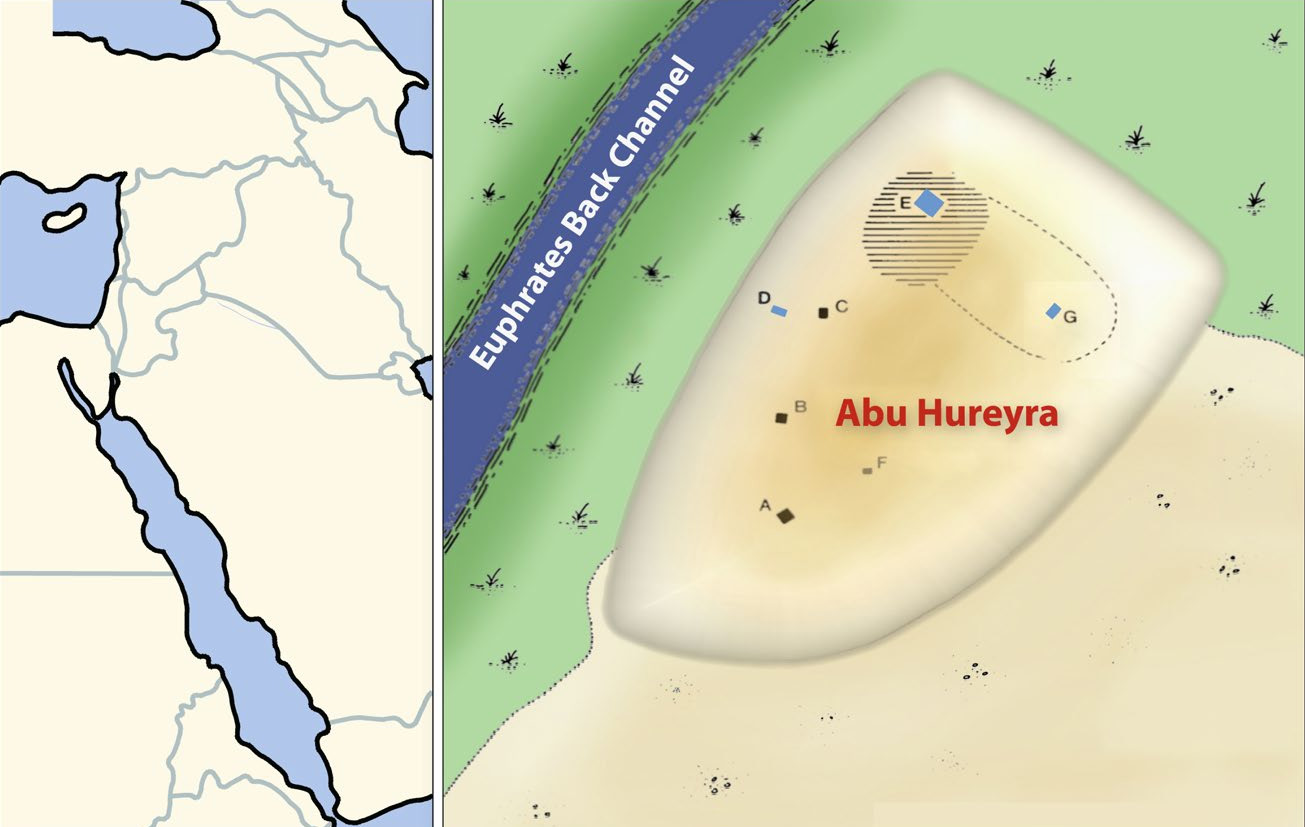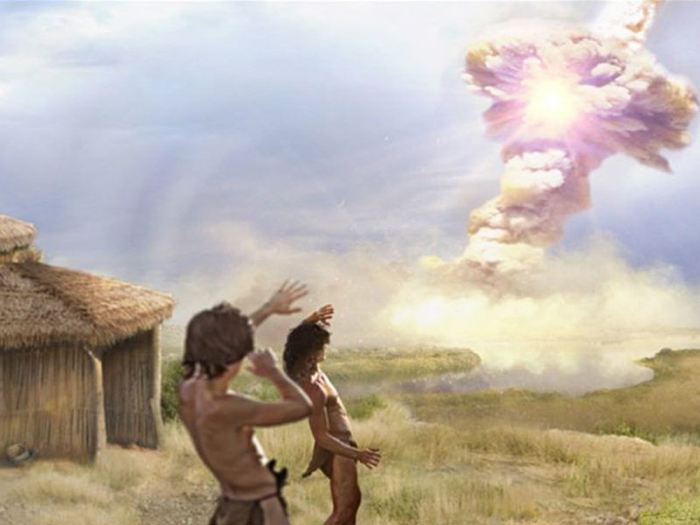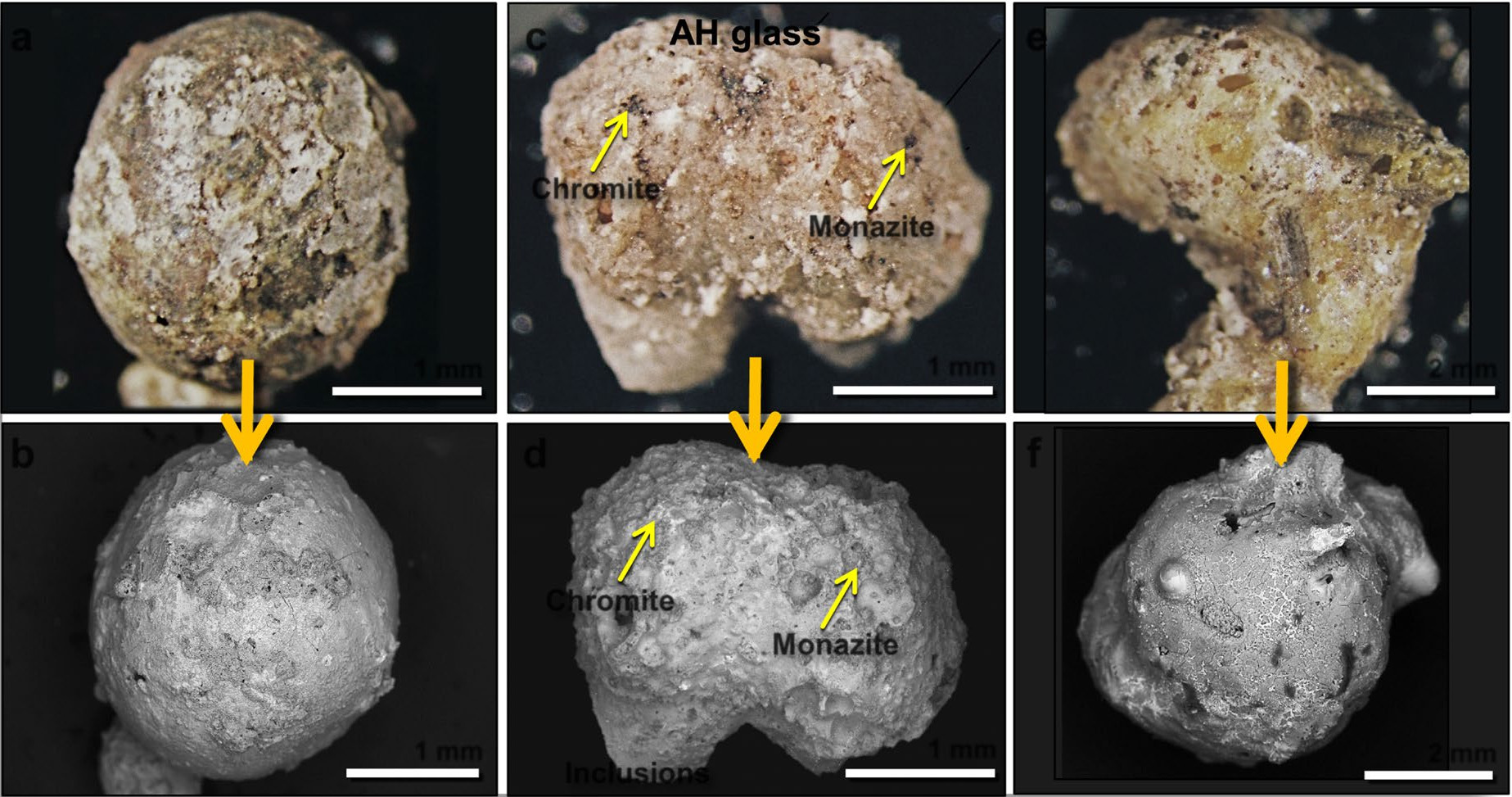Almost 13,000 years ago, a group of prehistoric nomads in what we now call Syria embarked upon a historic change. They abandoned their hunter-gatherer ways, and became the earliest known pioneers of a new milestone in human civilisation: agriculture.
Just where the ancient foragers of Abu Hureyra got this outlandish notion of farming may never be known. But according to new analysis of curious particles found in the soil, those nomads bore witness to an exploding comet. The team behind this research thinks that cosmic impact may well have played a cultural role.
Today, the archaeological site of Abu Hureyra is deep underwater, covered by Syria's largest lake, Lake Assad. The reservoir was created in the 1970s, when a dam enclosed the waters of the Euphrates river.
Before the historical legacy of Abu Hureyra was drowned, though, archaeologists excavated as much of its ancient remnants as they could carry.
 Location of Abu Hureyra. (Moore et al., Scientific Reports, 2020)
Location of Abu Hureyra. (Moore et al., Scientific Reports, 2020)
Amidst flint tools, bones, and hut-like structures, the researchers found something else: spherical beads of glass called meltglass spherules, the likes of which form in extremely hot, high-energy events, usually associated with cosmic collisions involving things like asteroids and comets impacting into planets.
For years, researchers have postulated that the existence of these tiny baubles strewn throughout Abu Hureyra is evidence the ancient village was part of what's known as the Younger Dryas impact hypothesis: the contention that a disintegrating comet or asteroid struck Earth 12,800 years ago, showering four separate continents in a fiery rain of destruction so intense, it triggered a wave of extinctions and even brought on a sudden, mini ice age called the Younger Dryas.
Some have gone so far as to suggest that this sudden change in Earth's environmental conditions was what caused the prehistoric villagers at Abu Hureyra to abruptly transition from hunting/gathering to cultivation, coinciding as it did with the inception of agriculture in Western Asia. Not everybody is swayed by the argument, however.
 Artist's impression. (Jennifer Rice/CometResearchGroup.org)
Artist's impression. (Jennifer Rice/CometResearchGroup.org)
A number of scientists have disputed the Younger Dryas impact hypothesis, although in recent years, new findings have offered fresh evidence to support the idea, including the discovery of a giant impact crater under the Greenland ice sheet, and more besides.
This latest study has taken a closer look at what kind of temperatures would have been necessary to produce the types of meltglass found in Abu Hureyra.
The results suggest the extreme heat required would have been far beyond the modest capabilities of prehistoric villagers, let alone basically anything on Earth.
"Our new discoveries represent much more powerful evidence for very high temperatures that could only be associated with a cosmic impact," says retired geologist James Kennett from UC Santa Barbara.
In new analyses examining the geochemical composition and structure of the village's ancient meltglass formations, the researchers found that the melted grains of quartz, chromferide, and magnetite in the glass would have required exposure to temperatures in excess of 1,720 °C, while some of the material in the glass most likely reached over 2,600 °C.
 Typical examples of Abu Hureyra meltglass. (Moore et al., Scientific Reports, 2020)
Typical examples of Abu Hureyra meltglass. (Moore et al., Scientific Reports, 2020)
Based on those results, the team says virtually all terrestrial explanations for the formation of Abu Hureyra's meltglass can be excluded, leaving only one probable cause.
"The formation of AH glass appears to require the occurrence of an intense and sudden high‐temperature event similar to known tektite-producing impacts," the authors explain in their paper.
"The collective evidence is best explained by the hypothesis that at least one high-energy, high-temperature, hypervelocity event occurred near Abu Hureyra ~12,800 years ago, most likely an airburst possibly accompanied by ground impacts by impactor fragments."
![]() Photomicrographs of silicon dioxide on the meltglass. (Moore et al., Scientific Reports, 2020)
Photomicrographs of silicon dioxide on the meltglass. (Moore et al., Scientific Reports, 2020)
The new findings are limited to the purported airburst in the vicinity of the ancient Syrian town, but nonetheless, it's yet more evidence that fits neatly into the broader picture of the Younger Dryas impact hypothesis, suggesting a fragmenting comet caused incredible destruction over huge swathes of Earth's surface.
"A single major asteroid impact would not have caused such widely scattered materials like those discovered at Abu Hureyra," Kennett says. "The largest cometary debris clusters are proposed to be capable of causing thousands of airbursts within a span of minutes across one entire hemisphere of Earth."
In the midst of Abu Hureyra's episode, the researchers suggest most of the village would have been destroyed, but the fact that life in the town continued suggests a group of survivors managed to hold on and rebuild, perhaps recognising that changes would now be needed, and the old ways would no longer support them in this brave new world, and its cooler, more arid environment.
"The village had a few hundred people living in it. Most must have perished," archaeologist Andrew Moore from the Rochester Institute of Technology told The Times.
"Enough seem to have survived to start life again. You have this catastrophe hit the settlement but people came back, regrouped, and carried on. Just this time they added farming to the economy."
The findings are reported in Scientific Reports.
"to have an impact" - Google News
April 10, 2020 at 07:47AM
https://ift.tt/3c7Wptf
Glass in The Soil of a 13,000-Year-Old Settlement in Syria Points to Comet Impact - ScienceAlert
"to have an impact" - Google News
https://ift.tt/2OtZUAR
Shoes Man Tutorial
Pos News Update
Meme Update
Korean Entertainment News
Japan News Update
Bagikan Berita Ini
















0 Response to "Glass in The Soil of a 13,000-Year-Old Settlement in Syria Points to Comet Impact - ScienceAlert"
Post a Comment